Tone and Theme:
There are a number of conventions within the cozy mystery
world that distinguish the cozy from the traditional mystery: the amateur sleuth,
the small, closed setting, the relatively bloodless murder, the absence of
sexual content and strong language, but nothing distinguishes a cozy from all
other forms of mystery and suspense fiction more than tone and theme. You can
get away with subverting pretty much any cozy convention if you still get the
tone and theme right.
Cozies are confusing. They are stories centered around
murders yet still feel-good. They are fast-paced yet not thrillers. They are a
study in contradictions.
To understand the cozy, it is essential to understand why
readers in general love mysteries. Close behind romance, mystery and suspense
fiction is the most popular genre with readers the world over and has been
throughout the modern era.
Despite mysteries being centered around a horrible
happening, that is not why readers love them. There are enough horrible
happenings to read about in real life. Mystery readers do not want real life.
They would abandon any book in disgust if the killer never got caught.
The killer getting caught and paying for his crime is the
point of the whole book. Bad things happen in cozies, but unlike in real life,
when all too often the perp walks free, proportional justice is always served.
In the world of the cozy, the punishment always fits the
crime. A cozy can feature any secondary theme that fits your fancy, but the
primary theme must always be “beware your sins will find you out.”
Cozy readers are not focused on the crime; they are focused
on solving of the puzzle that gets them to that satisfying end when the baddies
get their comeuppance.
Traditional mysteries are also all about the puzzle, but
they don’t mind getting a bit dark and gritty along the way. Cozies do not do
dark. They do not do gritty. And that is the one unbreakable rule of writing
one.
Cozies must be light, bright, and feel-good. That often
means cats, cupcakes, knitting, and country fairs. It doesn’t have to. Cozies
can incorporate an endless array of elements, but those elements must never
delve into the dark (even the witches in cozies are paragons of sweetness and
light), and the central theme of proportional justice must forever remain at
the heart of the story.
Subgenre:
Closely related to tone and theme is subgenre, each of which
has its own set of conventions and specific reader expectations. The main
subgenres of cozy mysteries are culinary, animal, paranormal, historical, and
crafts.
Cozies that fit neatly into at least one of these subgenres
will be considerably easier to market, so consider incorporating appropriate
elements from at least one of these subgenres right from the start.
Learn more about cozy subgenres.
Cozy mysteries are (almost) always written in series with a
recurring amateur sleuth at the center of the action.
Amateur sleuths in cozy mysteries are usually female and
should be both relatable and likable to the typical reader (a middle-aged or
older woman). The cozy sleuth is usually in her thirties or older (most often
older), but this is not a hard and fast rule.
The sleuth does not have any background in criminal justice
or law enforcement; instead, she relies on her life experience and her understanding
of human nature to tease out clues and solve crimes. She is competent, independent,
and an excellent communicator.
She is most frequently single (most often divorced or
widowed), and finding love again is a common ongoing secondary story arc in
cozy series.
The sleuth is generally assertive (and at times downright
nosey) but rarely simply for the sake of being a busy body. She should have a genuine
and ethically-driven motivation, even if that motivation is simply to see
justice served. Often the reason she embarks on an investigation into a crime
is far more personal, and either the victim or the accused will be tied to her
social circle in some significant way.
The sleuth is a flawed character and makes mistakes, but she
always owns up to her mistakes when forced to face them. She must be an imminently
trustworthy character with a flawlessly functioning moral compass.
The sleuth often has either an occupation or a hobby that
ties into one of the common cozy mystery subgenres: culinary, crafts, animals,
paranormal, etc.
Creating a likable and capable sleuth is the first and most
important step in writing a cozy mystery.
Start with these questions:
Male or female?
Age?
Ethnicity and cultural background?
Former and present occupation(s)?
Relationship status and significant family relationships?
Significant friendships? Does this person have a nemesis?
Personality?
Quirks? Enthusiasms/pet peeves? What makes this person
unique?
Strengths of Character? What makes this person admirable?
Weaknesses and disadvantages? What makes this person
relatable?
What are the crossroads this person is facing at the start
of the series?
And to avoid at all costs: the too stupid to die sleuth.
In cozy mysteries, especially long-running series, the
setting can be almost as important as the sleuth.
Cozies can be set anywhere, but the vast majority are set in
small towns. There are several reasons for this: Small towns allow the writer
to visit and revisit a limited cast of supporting characters. Small towns create
a somewhat closed environment where everybody knows everybody else’s business,
which makes an investigation carried out by an amateur more realistic. Small
towns also have a nostalgia factor that appeals to the many cozy readers. Cozies
may be all about murder but of the kinder, gentler sort with the scent of
gingerbread wafting on the breeze and kittens cavorting under the lilac bushes.
A cozy can also be successfully set in a single close-knit neighborhood
in a larger city (think a village within a city) or any semi-closed setting
such as a cruise ship, resort, boarding school, etc.
The setting is often more completely described in early
books and in decreasing detail as the series progresses as the typical reader
moves from book to book in the series.
Within the larger setting of the small town, there are often
“sets” where action repeatedly takes place, such as the sleuth’s workplace,
home, parks, restaurants, theaters, community centers, etc. These also may be
described in more detail early on and gradually become familiar to readers
working their way through the series.
The sleuth’s workplace—café, bookstore, knitting shop—is
often the epicenter of the action. This serves a secondary purpose of
reinforcing the subgenre expectations. For example, the culinary cozy must incorporate
cooking, and the animal cozy must include pets as significant elements
Setting is integral to subgenres. The historical cozy or
paranormal cozy will need more descriptive settings since bygone eras and fantasy
realms are outside the experience of the reader and require more explanation.
Learn more about worldbuilding for cozies.
The Supporting Characters:
The supporting characters in the cozy series are essentially
part of the setting and pop in from time to time to further the finding of
clues but often simply serve as local color. Supporting characters frequently have
their own mini-story arcs, which continue throughout a series.
Common roles played by recurring characters in a cozy are
sidekicks (one or more characters who routinely assist the sleuth in her
investigation), the nemesis or rival (always obstructing either the
investigation or the sleuth’s personal life), the love interest, the sage
(doesn’t actively help in the investigation but provides a valuable sounding
board and “voice of reason” for the sleuth).
A common device is to give the sleuth someone in her inner
circle who is either a law enforcement officer or a detective. This allows the
sleuth to gain access to information she would not have as a private citizen.
The crime in a cozy is most often a murder, but it doesn’t
have to be. Whatever the crime of choice, the description of the crime scene is
never graphic. Common causes of death are poisonings, a knife in the back, a
single gunshot wound to the head, and other fairly bloodless murders. The “accident”
that turns out not to be an accident after all is also common in the cozy.
100 ways to kill off your victim.
Other crimes of choice: kidnappings, missing persons,
extortion, thefts, and sabotage. The one off-limits crime for cozies is
anything involving rape or sexual assault. Almost any other crime that doesn’t
involve a child or an animal as the victim can be adapted to cozy treatment.
100 nonlethal crimes for cozies.
This brings us to the victim.
Unlike suspense thrillers or gritty traditional mysteries,
the victims in cozies are often extremely unlikable. Very often, the murder victim
in the cozy may not have deserved to die, but it was their own unscrupulous or
cruel actions that touched off a series of events that led to their demise.
The cozy victim often has a list of people who might want
them dead for various reasons.
The unlikable victim is not obligatory to the cozy—sometimes
the victim got caught up with the “baddies” through no fault of his own—but more
often than not, the victim isn’t someone we feel very sorry for. By definition,
a cozy is a feel-good read. The cozy reader, above all else, wants everyone to “get
what they deserve.”
Children and animals are off-limits when it comes to
inflicting bodily harm. Very vulnerable characters can become victims of nonviolent
crimes but are not generally portrayed as being traumatized by their ordeal. For
example, the villain might abscond with the sleuth’s puppy, but the puppy comes
back safe and sound and just thinks he went for a ride.
In cozies, any recurring supporting character may fall
victim to a nonlethal crime, but in a cozy, characters never end up dead after
the readers have had time to become attached to them.
A frequently used plot device in both traditional mysteries
and cozies is the “mid-point second body,” where the sleuth’s prime suspects
turn up dead halfway through the investigation, and the sleuth is forced to
start over.
Sometimes, the midpoint is not marked by a second murder but
a crime of lesser magnitude, which either reveals new information about the
initial crime or somehow exonerates one of the suspects.
Read more on writing cozy mystery hooks.
The suspects in the cozy are most often friends, business
associates, or family members of the victim. The perp in a cozy never turns out
to be an itinerant serial killer. All the suspects, including the perpetrator,
must be introduced early in the investigation.
When creating suspects for your cozy crime, they each must
be given a means of having committed the crime (right place, right time, right resources)
and a motive (a reason for wanting to commit the crime in question).
Quite often, several of the suspects have something to hide
(sometimes completely unrelated to the crime in question), which causes lies
and inconsistencies in their stories. The lies must be unraveled before the
truth is revealed.
It is very useful to give each suspect two parallel stories:
what actually happened and what they tell other people.
A big part of the sleuth’s job is motivating both suspects
and witnesses (and sometimes victims in nonlethal crimes) to tell the truth.
The investigation typically follows a try/fail cycle with an
unexpected event throwing the whole investigation into disarray at the
midpoint.
Most of what the sleuth finds out should be immediately
revealed to the reader, with the exception of withholding not the clues but the
conclusion the sleuth reaches from analyzing the clues prior to the big reveal.
The sleuth herself does not solve the mystery until shortly
before she reveals the perp.
A mystery convention is to have a final confrontation with either
a prime suspect or the perp that puts the sleuth in peril right before the
killer is caught. This is not necessary, but it is frequently done.
The next to last scene in a mystery is generally the sleuth laying
out her case for either law enforcement or the loved ones of the victim. This
is sometimes referred to as “the drawing-room scene,” after golden age
mysteries where the detective would call everyone together into the drawing-room
and unmask the murderer.
Typically following the arrest of the killer, there is one
final scene (often quite short) where the sleuth and her compatriots return to
a state of tranquility.
The investigation is made up of a series of clues that the
sleuth must put together like pieces of a puzzle. These clues may be revealed
in a variety of ways, including:
Physical evidence observed or recovered at the crime scene.
Physical evidence discovered at a second location.
Investigating the victim (asking around, cyber
investigation, etc.)
Interviewing the victim (if nonlethal crime.)
Identifying witnesses and collecting eye-witness accounts of
the crime.
Identifying possible suspects and then narrowing down the
lists.
Interviews with associates of the most likely suspects.
Interviews with the suspects themselves.
Confirming (or exposing) the alibis of the suspects.
Investigating the suspects (asking around, cyber
investigation, etc.)
Tailing the suspects.
Revisiting the crime scene with fresh eyes.
Rethinking all assumptions in light of unexpected events.
A common mystery convention is the insertion of a “red herring,”
a finding that appears to point to the guilt of a certain suspect yet turns out
to be insignificant or misleading in the light of subsequent information.
The sleuth may temporarily fall for the “red herring” when
it is presented, or the misleading clue may simply be presented for the reader
to fall for without the sleuth even interacting with it in any meaningful way.
It is useful to scatter clues into scenes where other things
aside from an active investigation are happening. It is also useful to present
a significant piece of information alongside a couple of other meaningless
details.
Every clue the sleuth uses to reach her conclusions must be there
for the reader to also see. Part of the fun of the mystery is trying to reach
the solution along with the sleuth.
Caveat: beware of making your clues too easy to spot and
your sleuth a dufus. Your reader should say, “I can’t believe I didn’t
see that,” not “I can’t believe she doesn’t see that.”
Read more on writing a satisfying ending for your cozy.

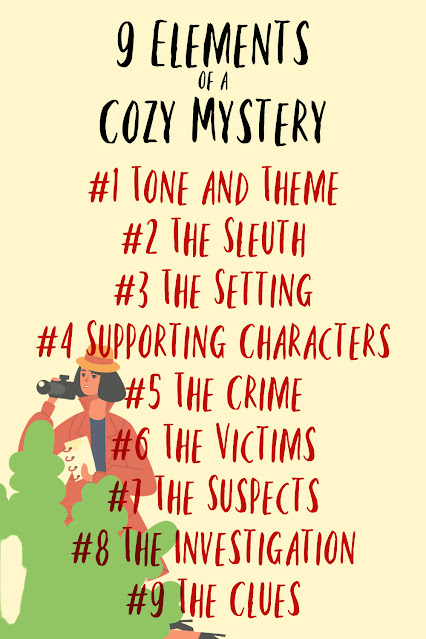
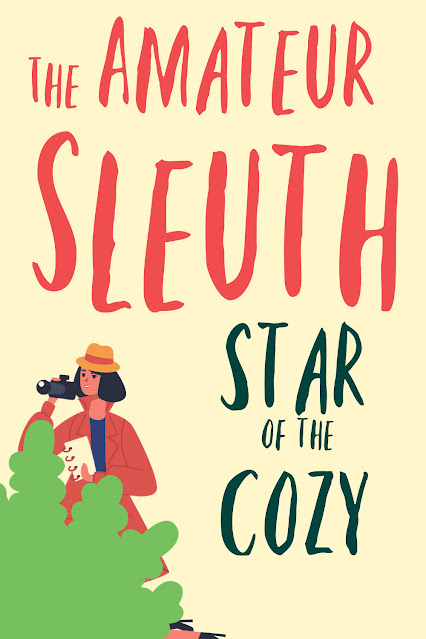
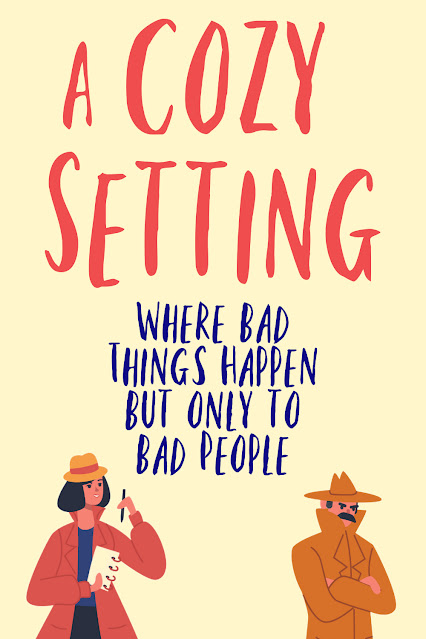
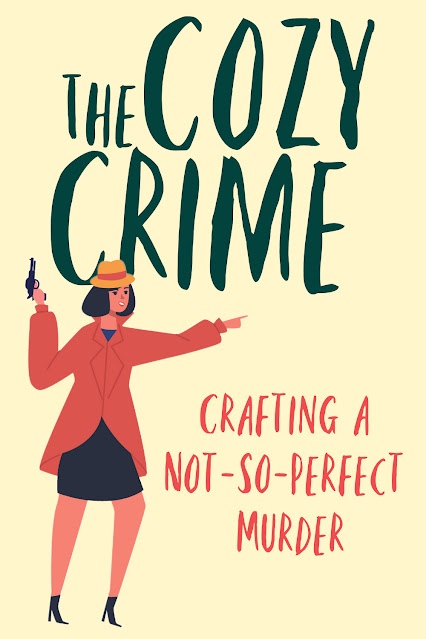
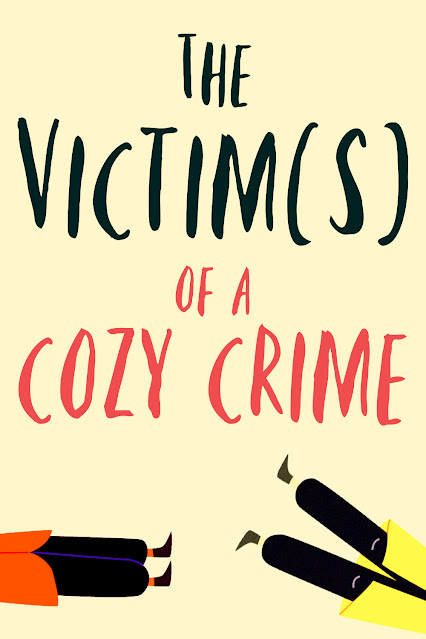
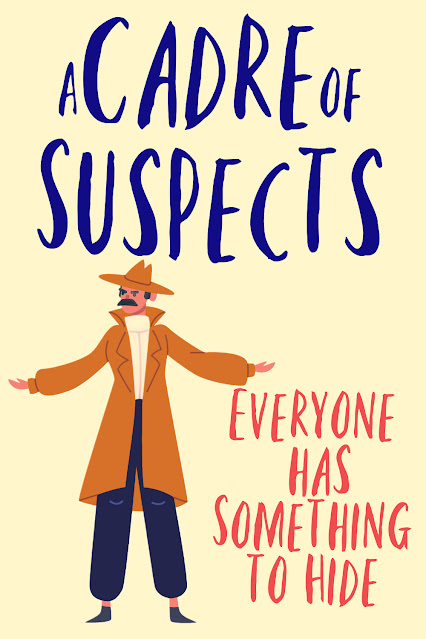
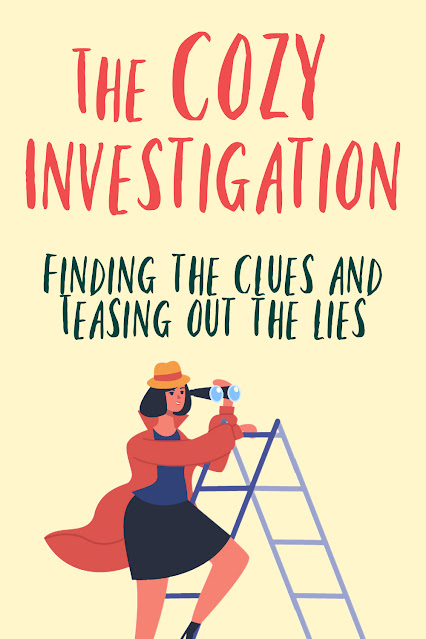

Leave a Reply